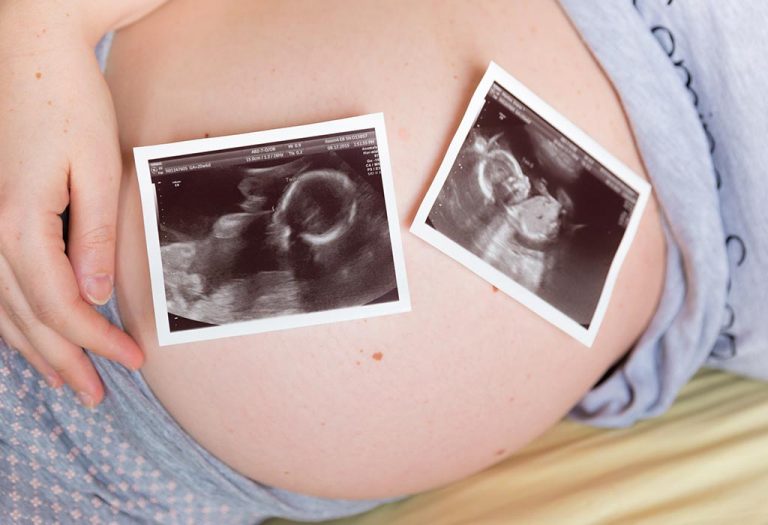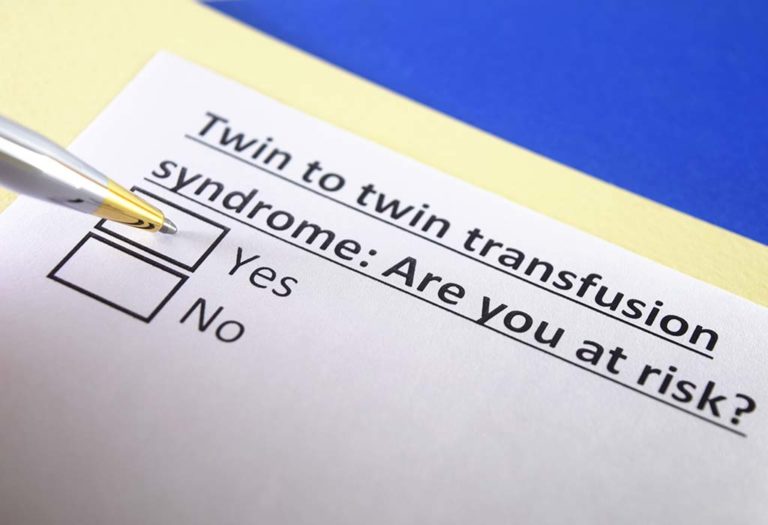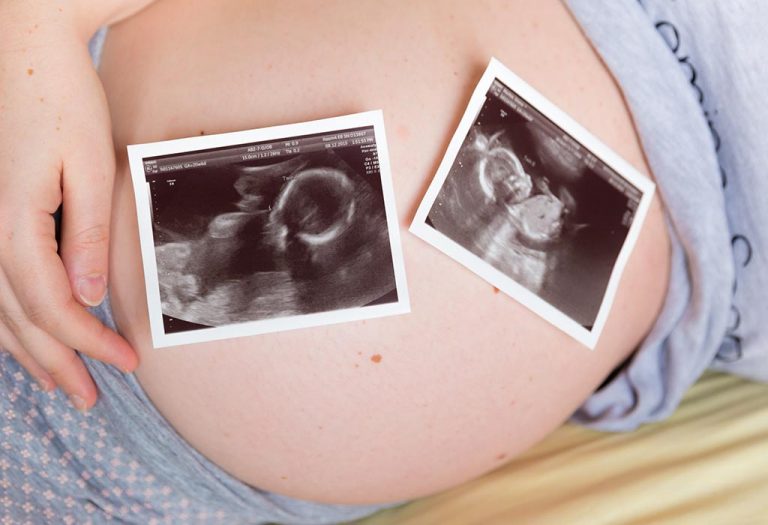Types of Twins: Identical, Fraternal and Other Types

Twins are two babies who are conceived and growing in the uterus of one mother and are usually born on the same day, although not necessary. Since the womb of a mother is usually limited in size, it is very likely that multiple and twin pregnancies are not always carried to full term. Modern procedures of artificial insemination have increased the chances of conceiving twins. However, not all twins look completely alike, and there can be different types of twins depending on the nature of their conception. Keep reading if you are wondering how many types of twins there are on record. In this article, we will share the twin pregnancy types and their unique characteristics.
What Are the Different Types of Twins?
The two types of twins that are widely known are fraternal twins and identical twins. Fraternal twins are created when two different eggs are fertilised by separate sperms. These twins do not look completely alike and are more likely to be a boy and girl pair.
Identical twins are created when a single fertilised egg creates a zygote that splits up to form two different embryos. These twins have distinctly similar features and are usually of the same sex.
Fraternal Twins (Dizygotic Twins)
Fraternal twins are the result of hyper-ovulation by the mother. This means that the mother, due to genetics or fertility treatment procedures, may release more than one egg, which gets fertilised by two separate sperms. These twins each have their own placenta and an amniotic sac. However, when the eggs fertilise, it is possible for the placentas to fuse together due to their proximity, which causes them to be mistaken for identical twins. Fraternal twins do not completely resemble one another, although there may be striking similarities (1).
Types of Fraternal Twins
There are different types of twin babies in the fraternal twin category.
- Sororal Twins: A girl and girl pairing of fraternal twins are called sororal twins. This pairing is very rare.
- Superfetation: Superfetation is when an egg is released and fertilised while the mother is already pregnant. Here, twins are conceived at different times (2).
- Heteropaternal Superfecundation: If a woman releases more than one egg during ovulation, it is possible for two eggs to get fertilised by different men. This can result in the twins having different fathers (3).
- Tetragametic Chimerism: When one of the zygotes out of the set of fraternal twins is absorbed into the other, resulting in a singular zygote, there will be one baby with two different strains of DNA.
Identical Twins (Monozygotic Twins)
Identical twins are created when a single egg is fertilised by one sperm. This egg splits in two, creating two babies with the same DNA (4). These twins may or may not share an amniotic sac and a placenta, based on the time of the split of the egg. The twins will each have their own placenta and amniotic sac if the egg splits within the first two days. If it splits within the next three to eight days, they will have the same placenta with separate amniotic sacs. In case the egg splits after thirteen days they will share a placenta and amniotic sac, which can result in a high-risk pregnancy and cause complications to the twins (5). If the egg doesn’t split until much later, conjoined twins or Siamese twins are formed.
When identical twins share a placenta, something known as a twin to twin transfusion may occur, where one twin may pass on blood to the other. Here, the twin receiving the blood will have excessive red blood cells and the twin donating the blood will have a lack of it, causing complications in both the twins.
Types of Identical Twins
The different types of identical twins are (6):
- Mirror Image Twins: These twins are created when the eggs split after a week or more after conception. Here, the left part of the egg becomes one twin and the right becomes the other. They are mirror images of each other, as such that if one has a mole on the right hand, the other will have a mole on the left. It is also possible for the organs in one twin to be on the opposite side of the body.
- Polar Body Twins: This happens when the egg splits unevenly before fertilisation. Usually, the smaller half, known as the polar body, dissolves into the mother. However, on rare occasions, it acts as a second egg which is then fertilised by a different sperm of the father. This results in twins sharing the DNA of the egg but having different DNAs from the sperms.
- Siamese Twins or Conjoined Twins: When the egg takes longer to split and doesn’t split completely, conjoined twins attached to a particular part of the body are born (7).
Is There Any Other Type?
Traditionally, twins have been classified as either identical or fraternal. However, there is one other rare and fascinating type of twin that doesn’t fit neatly into these categories. Here is the unique type of twin you might not be as familiar with.
Semi-Identical Twins
Semi-identical twins, also known as sesquizygotic twins, are an extremely rare type of twinning. This occurs when a single egg is fertilised by two sperm before splitting into two embryos. As a result, these twins share more DNA than fraternal twins but are not completely identical like monozygotic twins. Only a few confirmed cases of semi-identical twins have been recorded, making this a fascinating and uncommon phenomenon (8).
Medical Complications of Twin Pregnancies
Twin pregnancies carry a higher risk of complications for both the mother and the babies compared to singleton pregnancies. Below are some common complications associated with twin pregnancies (9) (10):
- Placenta Previa – The placenta implants too low in the uterus, potentially covering the cervix, leading to bleeding risks.
- Placental Abruption – The placenta detaches prematurely from the uterine wall, causing significant bleeding, abdominal pain, and distress to the babies.
- Placenta Accreta – The placenta grows too deeply into the uterine wall, increasing the risk of excessive bleeding during delivery.
- Gestational Hypertension – Elevated blood pressure during pregnancy, which can progress to preeclampsia and pose serious risks to both mother and babies.
- Gestational Diabetes – Increased blood sugar levels during pregnancy, potentially leading to larger babies and complications during delivery.
- Postpartum Hemorrhage (PPH) – Overdistension of the uterus increases the risk of excessive bleeding after birth due to poor uterine contraction.
FAQs
1. Can twins be born at different times?
Yes, twins can sometimes be born days, weeks, or even months apart. This occurs in cases of delayed interval delivery, where one twin is born prematurely while the other remains in the womb for further development (11).
2. Do twins have a special connection?
Many twins, especially identical ones, report a strong emotional and mental connection. Some experience twin telepathy, where they can sense each other’s emotions or thoughts, even when apart. While science hasn’t proven this, the deep bond between twins is well-documented (12).
3. Are twins more common now than in the past?
Yes, twin births have increased in recent decades due to factors like assisted reproductive technologies (IVF), fertility treatments, and older maternal age, as women over 30 are more likely to release multiple eggs during ovulation.
With the use of artificial insemination procedures, the number of women having twins and multiple pregnancies is on the rise. It is surely a miracle to have two babies that look alike. However, twin pregnancies are considered to be high-risk pregnancies and proper consultation with an experienced doctor is recommended.
References/Resources:
1. Fraternal Twins; National Human Genome Research Institute; https://www.genome.gov/genetics-glossary/Fraternal-Twins
2. Superfetation; Cleveland Clinic; https://my.clevelandclinic.org/health/diseases/24590-superfetation
3. Mogollón. F, Casas-Vargas. A, Rodríguez. F, Usaquén. W; Twins from different fathers: A heteropaternal superfecundation case report in Colombia; PubMed Central; https://pmc.ncbi.nlm.nih.gov/articles/PMC7808779/
4. IDENTICAL TWINS; National Human Genome Research Institute; https://www.genome.gov/genetics-glossary/identical-twins
5. Twins; Yale School of Medicine; https://medicine.yale.edu/obgyn/kliman/placenta/twins/
6. Zygosity for twins; International Council of Multiple Birth Organisations; https://icombo.org/zygosity-for-twins-2/
7. There Are More Types of Twins Than You Might Think; Cleveland Clinic; https://health.clevelandclinic.org/types-of-twins
8. Semi-identical twins identified in pregnancy for first time; UNSW; https://www.unsw.edu.au/newsroom/news/2019/02/semi-identical-twins-identified-in-pregnancy-for-first-time
9. Complications of Multiple Pregnancy; Johns Hopkins Medicine; https://www.hopkinsmedicine.org/health/conditions-and-diseases/staying-healthy-during-pregnancy/complications-of-multiple-pregnancy
10. Complications of Multiple Pregnancy; Stanford Medicine Children’s Health; https://www.stanfordchildrens.org/en/topic/default?id=complications-of-multiple-pregnancy-85-P08021
11. Klearhou. N, Mamopoulos. A, Pepes. S, et al.; Delayed interval delivery in twin pregnancy: a case report. We present a case of delayed interval delivery in twins; PubMed Central; https://pmc.ncbi.nlm.nih.gov/articles/PMC2464260/
12. Can Twins Read Each Other’s Minds?; Washington State University; https://wstwinregistry.org/twin-faqs/read-minds/
Also Read:
Amazing Facts About Twins
How To Get Pregnant With Twins?
Twins Delivery – All You Must Know
Potential Complications of Twin Pregnancy
Surprising Facts about Fraternal (Non-identical) Twins
Was This Article Helpful?
Parenting is a huge responsibility, for you as a caregiver, but also for us as a parenting content platform. We understand that and take our responsibility of creating credible content seriously. FirstCry Parenting articles are written and published only after extensive research using factually sound references to deliver quality content that is accurate, validated by experts, and completely reliable. To understand how we go about creating content that is credible, read our editorial policy here.

























